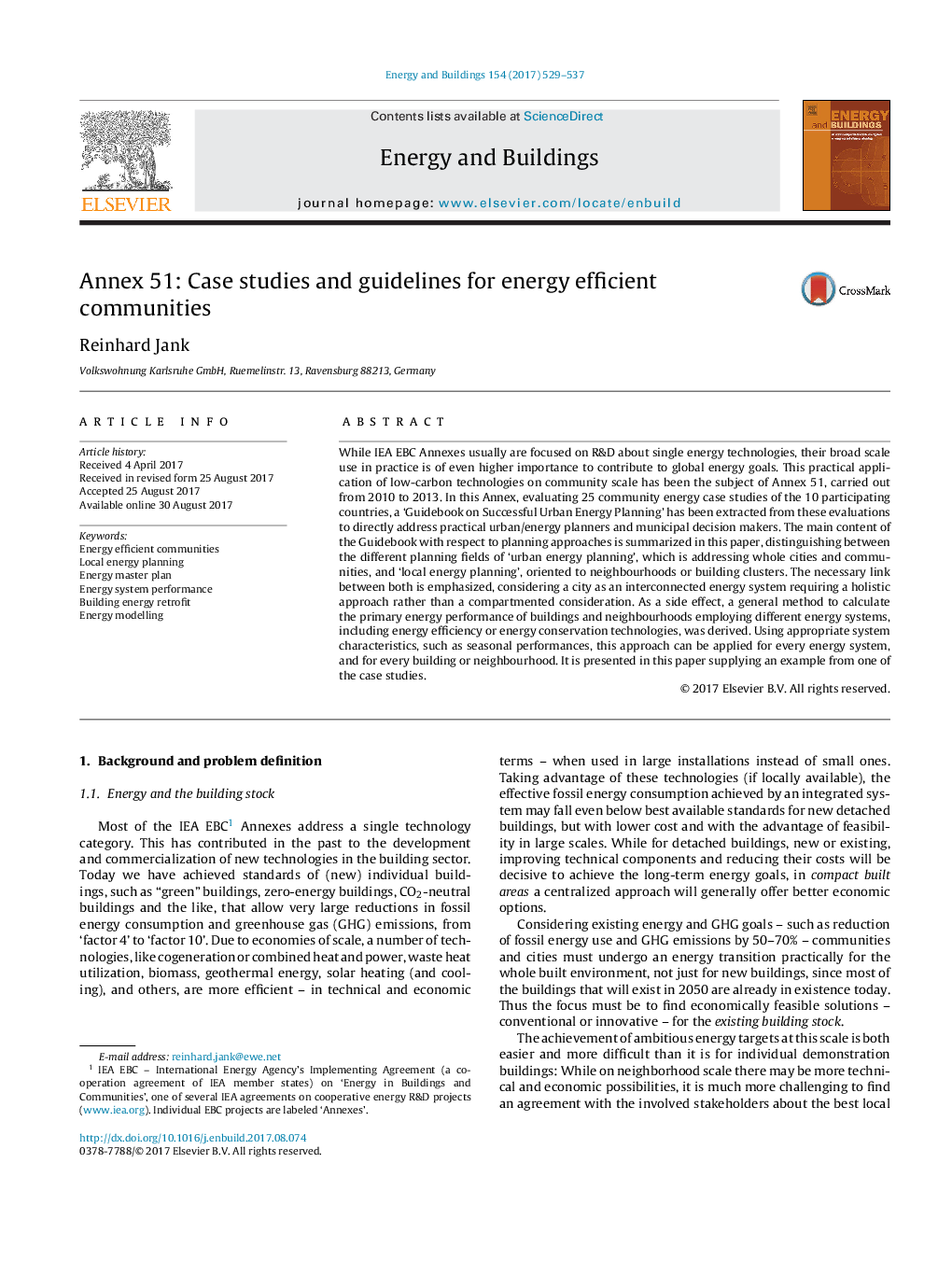| Article ID | Journal | Published Year | Pages | File Type |
|---|---|---|---|---|
| 4918781 | Energy and Buildings | 2017 | 9 Pages |
Abstract
While IEA EBC Annexes usually are focused on R&D about single energy technologies, their broad scale use in practice is of even higher importance to contribute to global energy goals. This practical application of low-carbon technologies on community scale has been the subject of Annex 51, carried out from 2010 to 2013. In this Annex, evaluating 25 community energy case studies of the 10 participating countries, a 'Guidebook on Successful Urban Energy Planning' has been extracted from these evaluations to directly address practical urban/energy planners and municipal decision makers. The main content of the Guidebook with respect to planning approaches is summarized in this paper, distinguishing between the different planning fields of 'urban energy planning', which is addressing whole cities and communities, and 'local energy planning', oriented to neighbourhoods or building clusters. The necessary link between both is emphasized, considering a city as an interconnected energy system requiring a holistic approach rather than a compartmented consideration. As a side effect, a general method to calculate the primary energy performance of buildings and neighbourhoods employing different energy systems, including energy efficiency or energy conservation technologies, was derived. Using appropriate system characteristics, such as seasonal performances, this approach can be applied for every energy system, and for every building or neighbourhood. It is presented in this paper supplying an example from one of the case studies.
Related Topics
Physical Sciences and Engineering
Energy
Renewable Energy, Sustainability and the Environment
Authors
Reinhard Jank,
